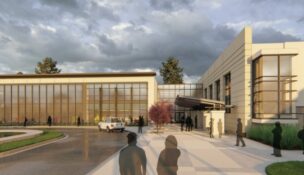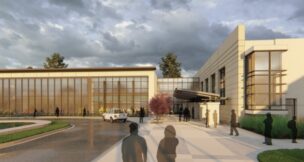Details emerge on state’s first $625M mass transit system in Charleston
Jenny Peterson //June 14, 2023//
Details emerge on state’s first $625M mass transit system in Charleston
Jenny Peterson //June 14, 2023//

South Carolina’s first mass transit system is expected to come online in 2029 with construction beginning in 2026.
It will comprise 22 miles of a mostly dedicated median lane for modern, electric buses to move passengers between the Exchange Park in Ladson, North Charleston and onto the Charleston peninsula ending at the Line/Hagood station near the medical district, with the majority of the route avoiding car traffic completely and getting first priority at traffic lights. It will be among the longest rapid transportation systems in the nation.
The roughly $625 million project has had a number of funding announcements, the most recent in the spring when a $100 million funding recommendation for the Lowcountry Rapid Transit was included in President Joe Biden’s 2024 fiscal year budget to Congress.
LCRT officials say the $100 million will be used to acquire 19 battery electric buses for the route as well as invest in system technologies, like transit signal priority for the buses. The to-be-built twenty covered stations for passengers will be equipped with Wi-Fi and there will also be Wi-Fi on the buses. The buses will run every ten minutes most of the day for fast and efficient transportation throughout the area.
Through the Federal Transit Authority Capital Investment Grants (CIG) Program, the maximum Federal contribution to LCRT is set at approximately $375 million, or 60% of the current project cost. The local project funding match is committed from the Charleston County half-cent sales tax.
In 2016, Charleston County voters approved a Transportation Sales Tax Referendum that included $180 million for LCRT construction and an additional $70 million for operations.
The rapid transit project was the brainchild of the Berkeley-Charleston-Dorchester Council of Governments as a way to tackle some of the area’s largest concerns in workforce transportation and affordable housing.
Berkeley-Charleston-Dorchester Council of Governments is partnering with the South Carolina Department of Transportation to lead the engineering and construction for LCRT with Charleston County as its local funding partner. LCRT will be operated by the Charleston Area Regional Transportation Authority (CARTA), which already runs public buses in the area.
“Inclusion in the President's budget to the tune of $100 million is a significant show of support and confidence in this project at the Federal level. The BCDCOG team and partners have been extremely thorough in positioning LCRT for success and will continue to deftly move it forward through completion,” said Mike Seekings, CARTA board chair.
Construction is set to last for three years due to the scope of the work: adding bright red dedicated bus lanes to the medians along University Boulevard and Rivers Avenue; adding new traffic signals and overall road improvements; constructing 20 stations, including some with park-and-ride options that will include parking lots.
There will be a pedestrian bridge built at Hackerman Avenue downtown for safe disembarking of the passengers and connecting the station to the surrounding neighborhoods; improving sidewalks and bike paths; and a major intersection improvement along Calhoun Street in the hospital corridor that would include a signal that stops traffic in all directions for pedestrians and bicyclists to have right-of-way.
“It is a 22+ mile corridor, so phasing details, utility coordination and construction schedule will be refined over the next year as engineering progresses,” states Daniel Brock, BCDCOG regional strategist. “Phase II of our Transit Oriented Development study is underway over the next year and will be looking at station areas and needed infrastructure improvements to bike and pedestrian access, affordable housing and other strategies to support communities around the stations.”
LCRT leaders had spoken previously about how the stations could spur nearby development with businesses catering to the passengers who will be waiting at the stops and those who will dropped there as their final destination.
“Business support for this project has been phenomenal,” Brock said. “Private sector leaders understand the opportunities here related to workforce movement and attainable housing. LCRT will help address a number of the region's most pressing needs, and the support from the business community is important to the system's ultimate success. It's a proud moment for regional collaboration.”
CARTA leaders are looking to review its current routes and how to best connect the rapid transit routes with local routes for seamless transportation options. A survey about CARTA route improvements is online now.
e















